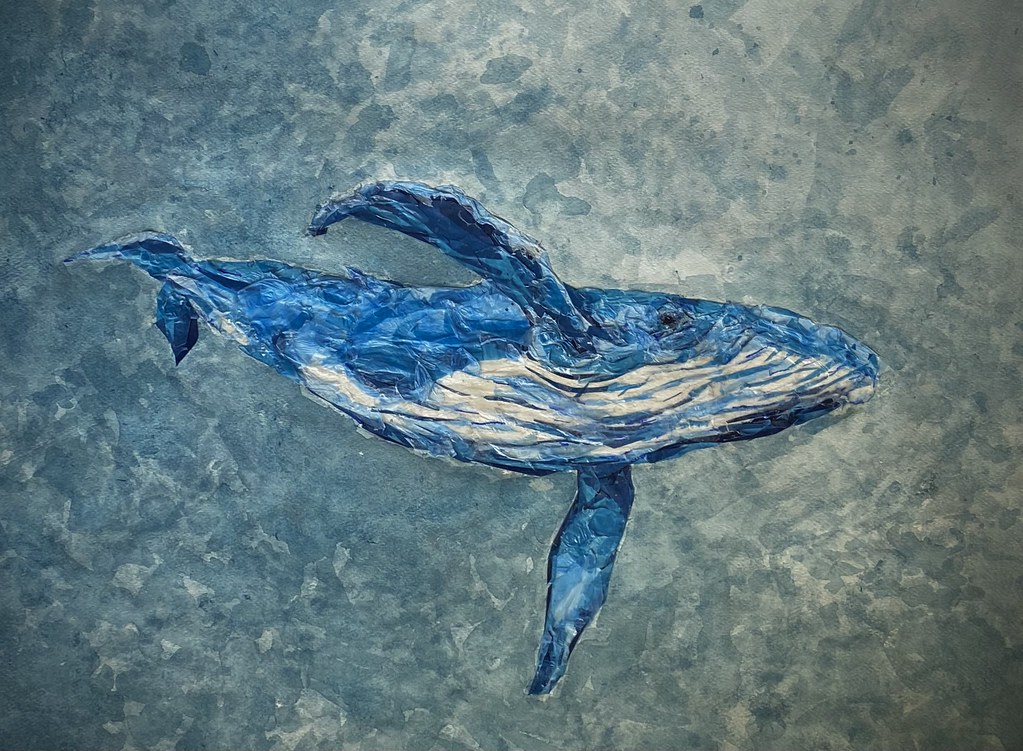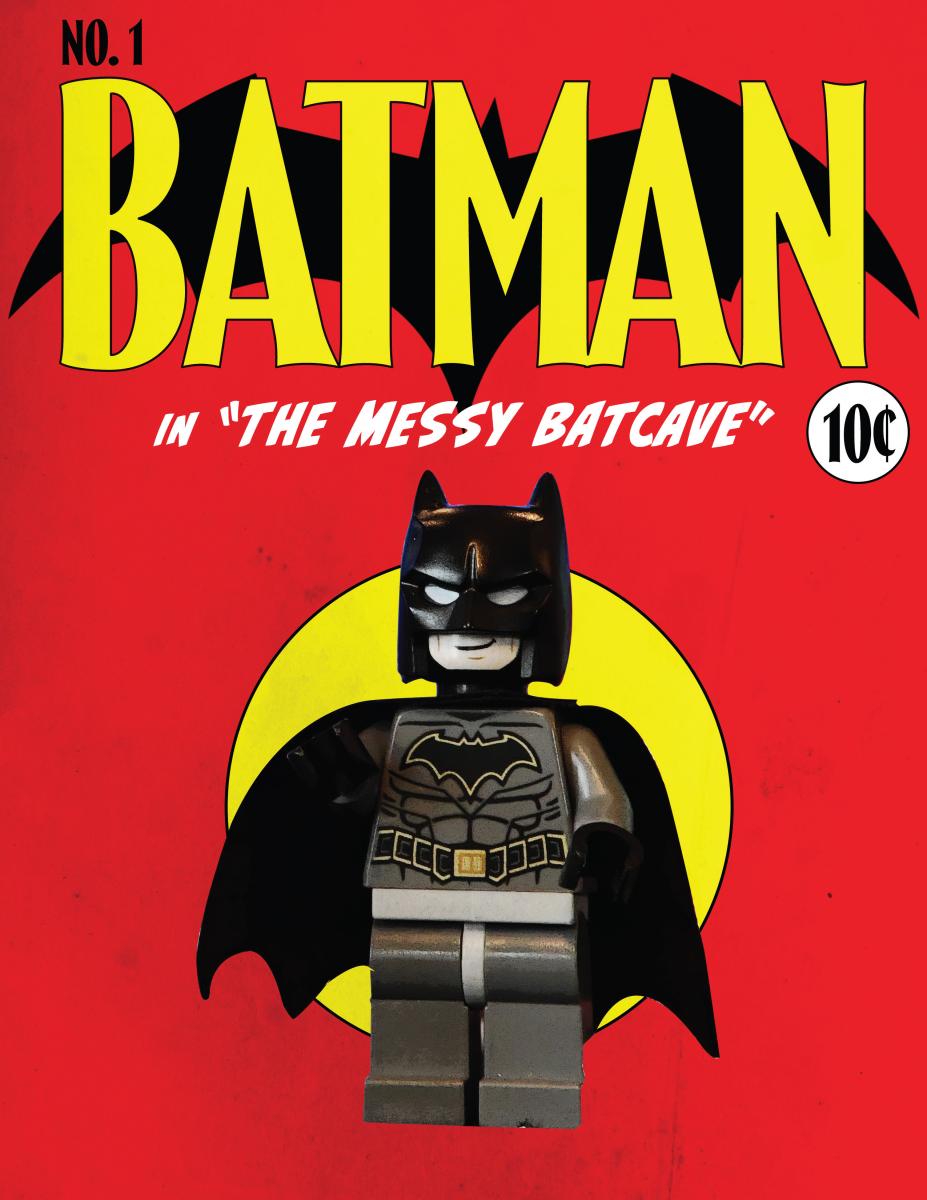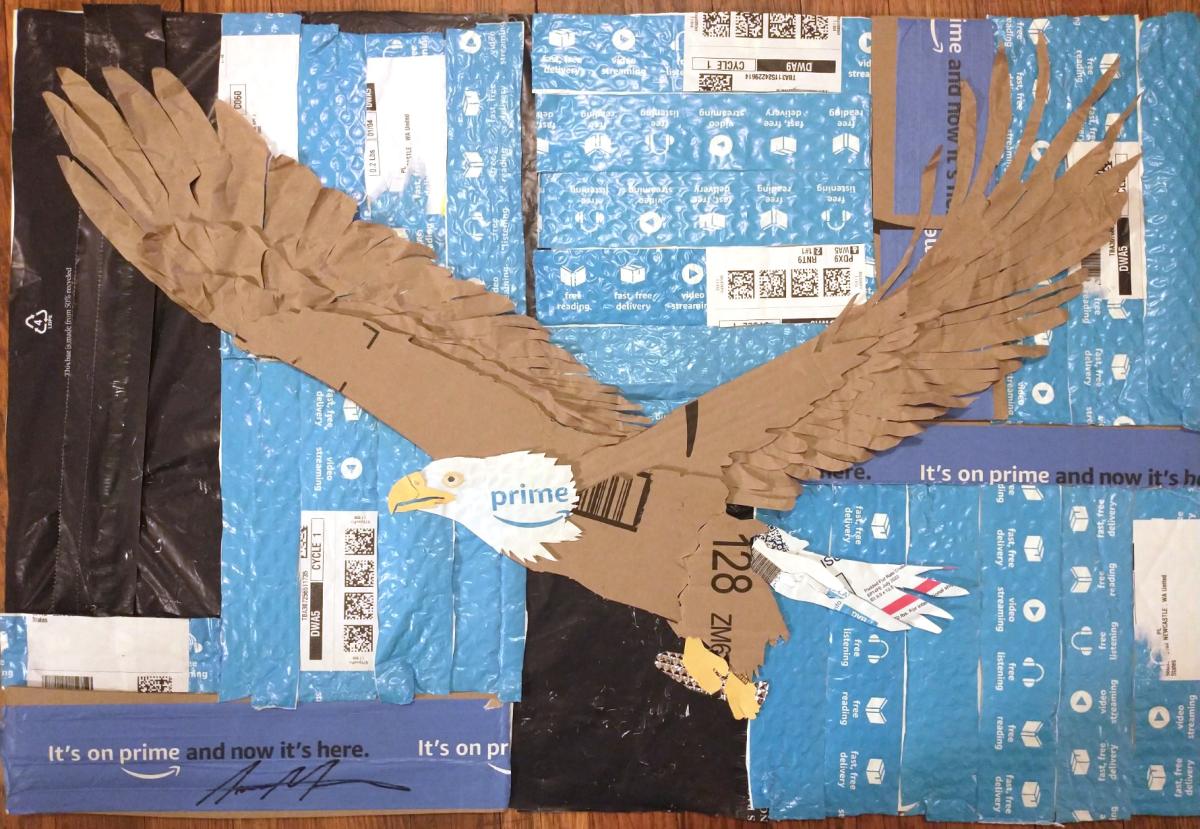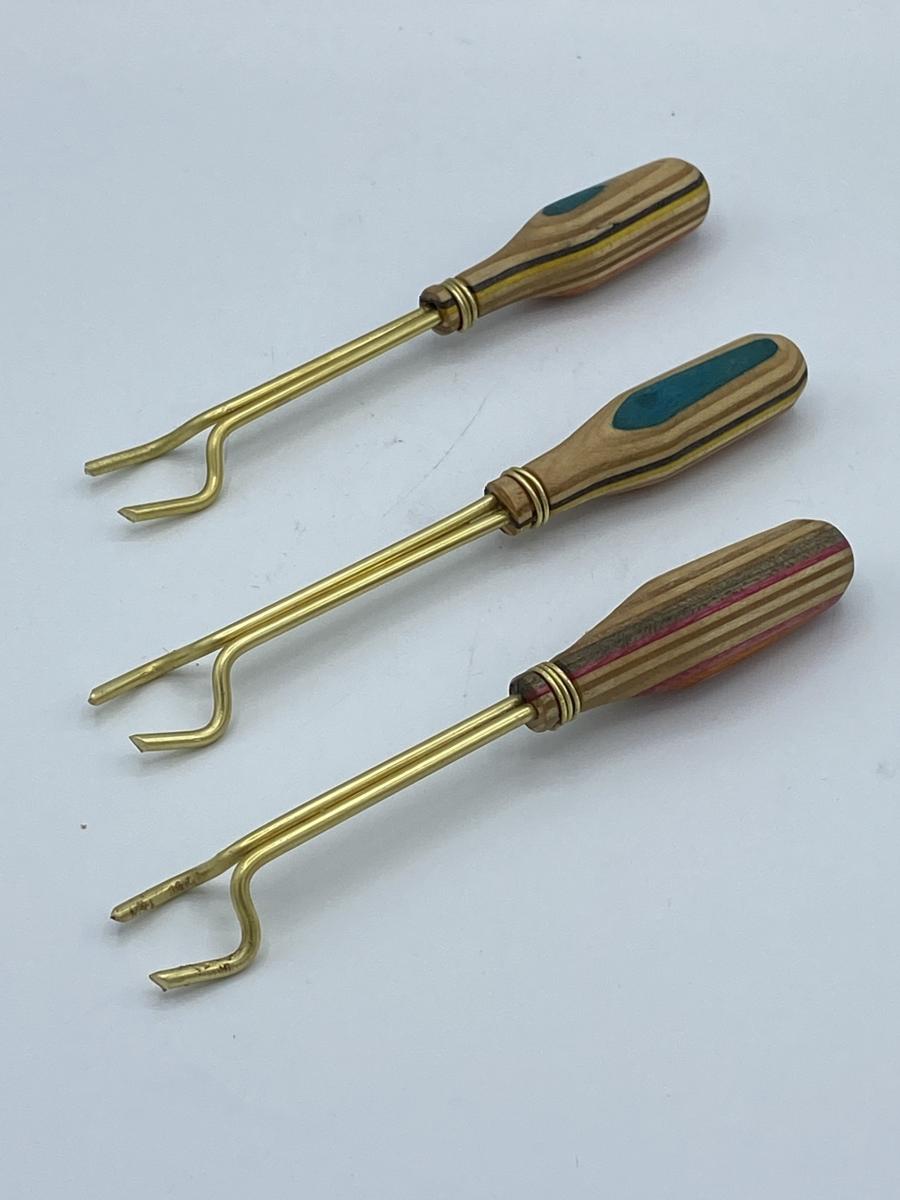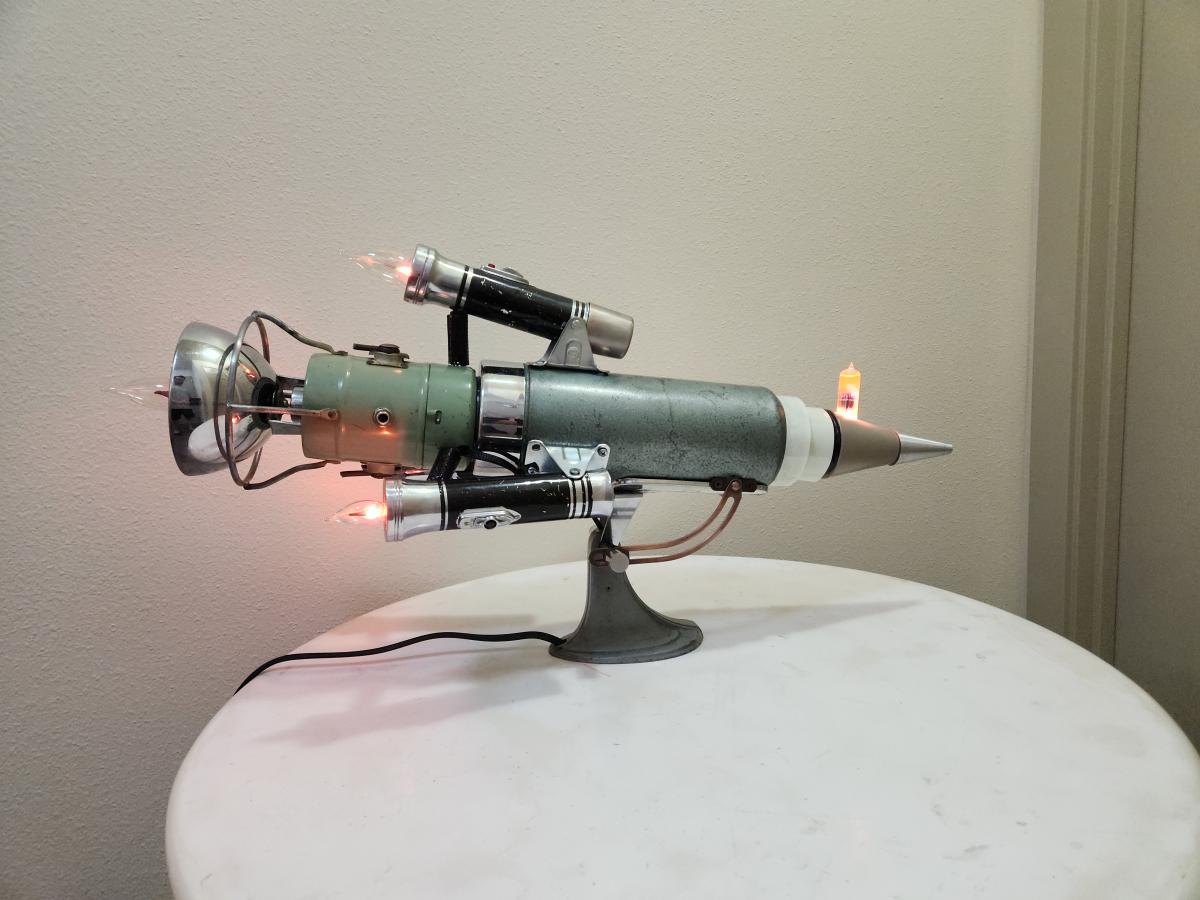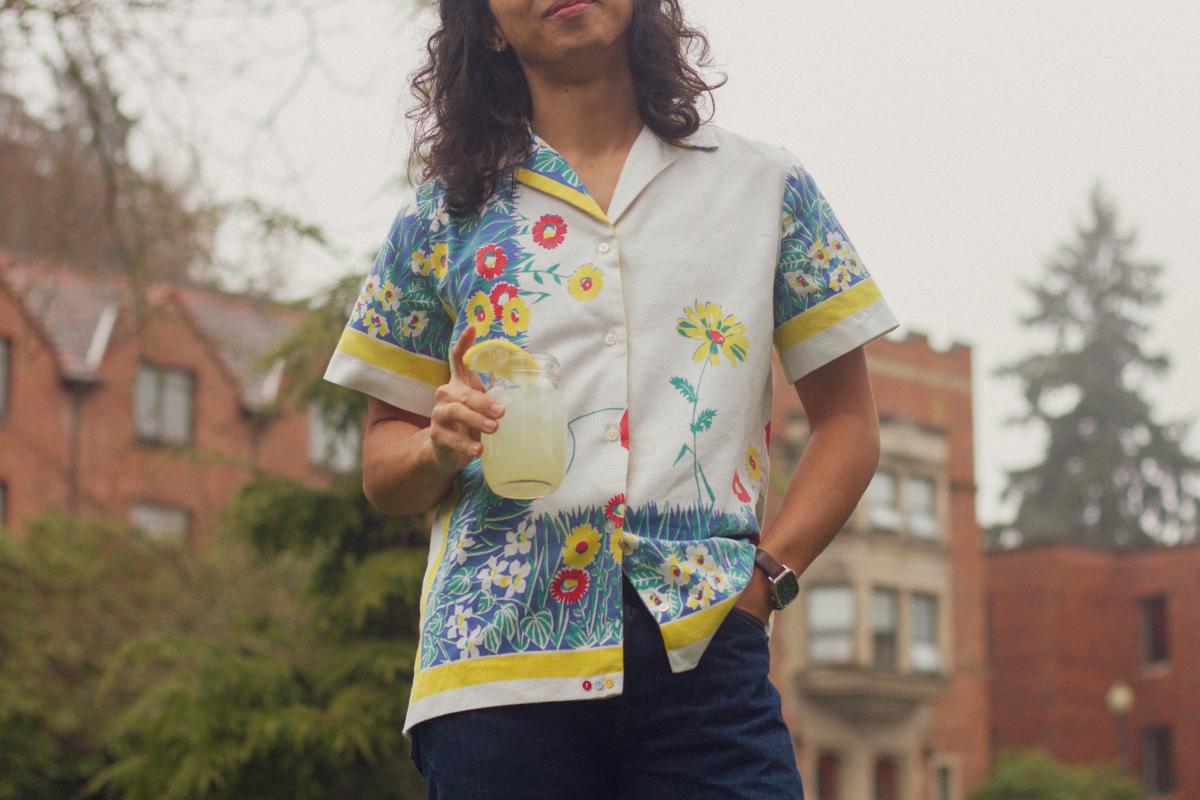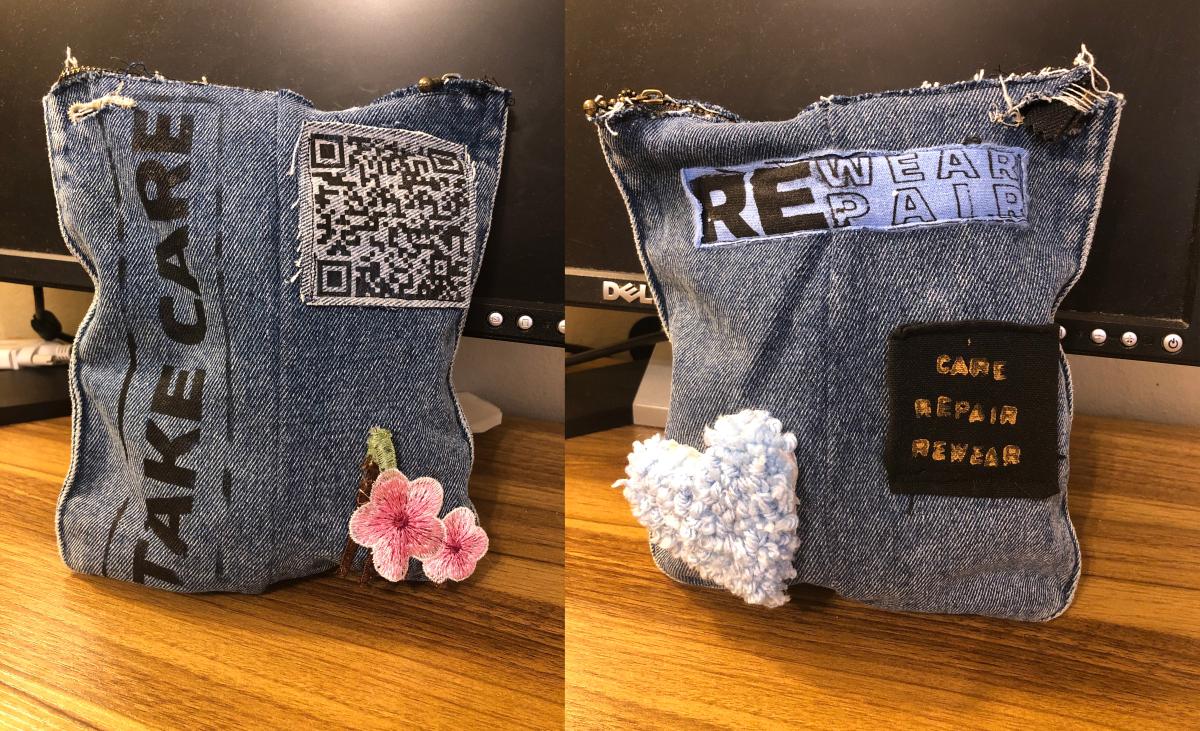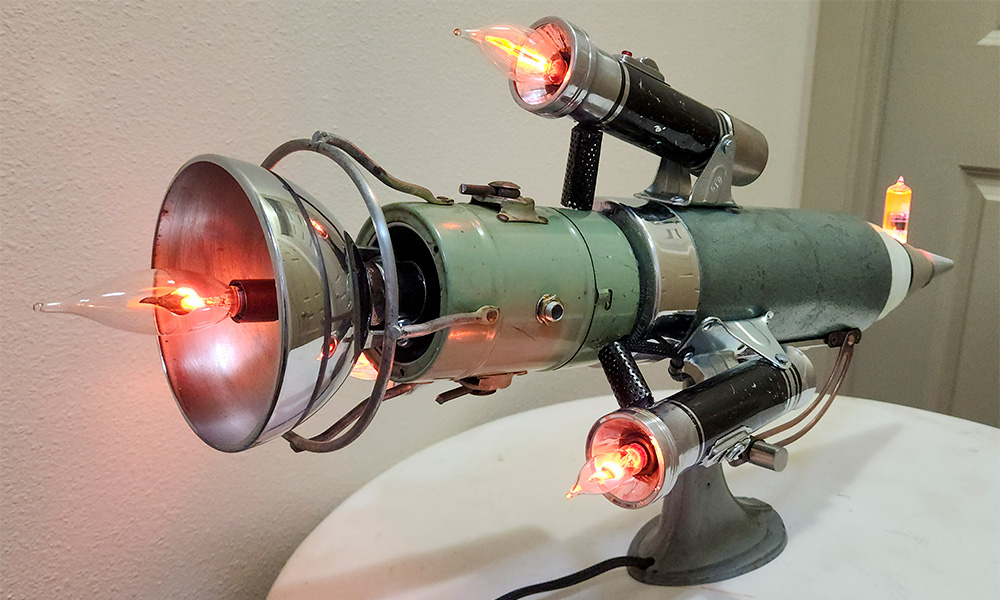
Winning pieces use art to spark conversations about waste
For the fifth year, artists from around the UW created dazzling art pieces in the annual Trash Art Contest.
UW Recycling received a record-number of submissions from UW students, faculty and staff. Eight winning pieces were selected in four categories. The artwork needed to be created from items normally thought of as trash or a written work about waste and sustainability. Artists were asked to express feelings or ideas about waste, or a sustainability topic that relates to waste.
This year's winners are:
Literature category
- The Messy Batcave by Greg Olsen
- Benny the Banana by Benji Blatt
2D art category
- Air Mail by Anna Malesis
- Mundane March Towards Madness by Tricia O'Hara
3D art category
- Foark by Samuel Riera
- Finding Space by Brennen Johnston
Textile art category
- Picnic by Nathan Hiatt
- Take care, Repair, Rewear by Ellie Cleasby
Click the name of the artwork to read the artwork’s description below.
Submissions were judged by a six person committee that included: two-time Trash Art Contest winner, Louise Wackerman, and local artist Amanda Manitach, who co-manages Recology’s Artist in Residence program. Judges looked at a series of criteria to determine winners.
The originality and thoughtfulness of the submissions impressed the UW Recycling selection committee.
"It was amazing to see the creative submissions done by people around campus,” said student judge Florencia Gonzalez-Martinez. “I enjoyed reading everyone’s interpretation of sustainability through their art piece."
UW Recycling’s goal for the contest is for people to see waste from a different perspective and consider its impact on our community and environment.
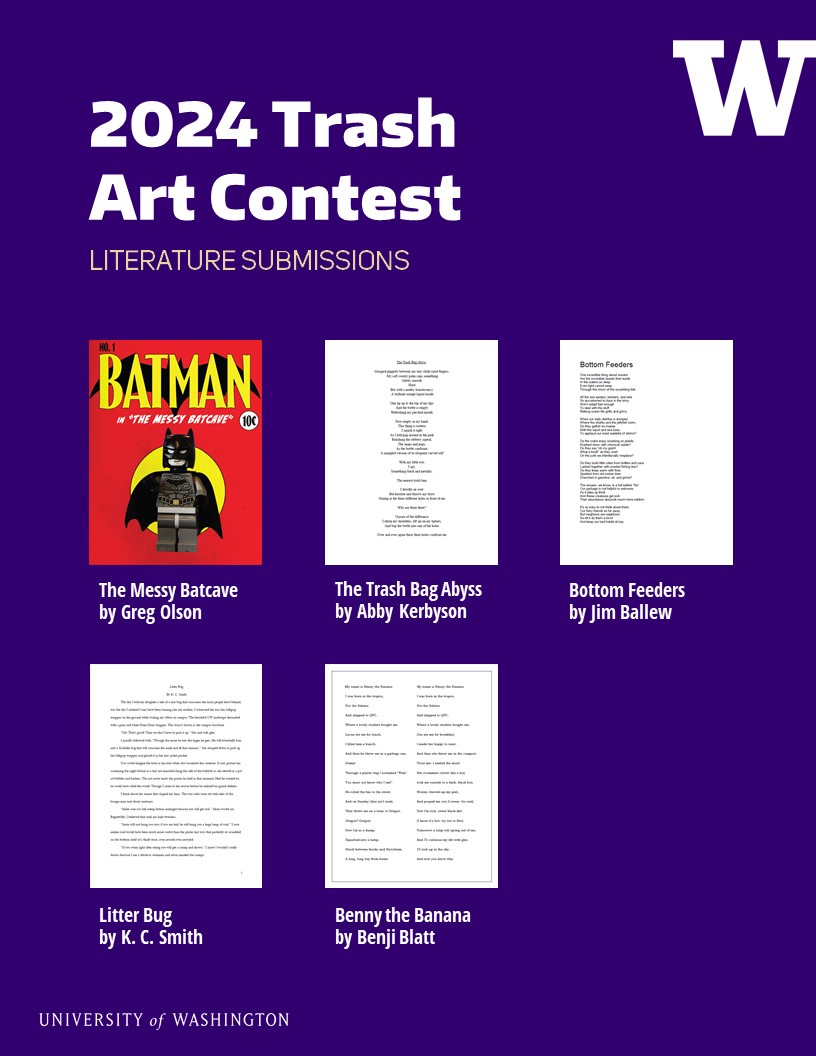 Click here to read all of the 2024 literature submissions.
Click here to read all of the 2024 literature submissions.
Click the slideshow below to view all the 3D, 2D, and textile art submissions.
The winning art pieces in each category are highlighted in detail below. They will also be displayed in an exhibit on the second floor of Odegaard Undergraduate Library from April 18 – May 15, 2024.
All details below submitted by the artists.
Literature category
Written work such as an essay, poetry, drama, or a story
1st place winner: The Messy Batcave by Greg Olsen
Olsen is a School of Law staff member.
Description and theme of the art piece
It's not uncommon to feel burdened by the things taking up space in our homes — or, in this case, the Batcave. As Alfred wishes to tidy up the Dark Knight's hideout and toss out seemingly useless pieces of garbage, Batman reflects on each piece's functionality and how they make Batman the hero who he is, and in turn teaches Alfred a lesson on repurposing items before tossing them out. Because, as the old saying goes, "One man's trash is another man's treasure."
How is this relevant to your personal and/or UW campus waste?
Too often, garbage is tossed out, ready to clear the way for the next consumable item. At the University of Washington, items are often used for their one intended purpose, but discarded immediately afterward. Students, staff and faculty need to explore alternative solutions to repurposing items, as opposed to giving them a one-way ticket to a landfill, such as submitting them for resale and reuse through the UW Surplus store. Programs such as these provide others with useful items and reduce the space taken up in our landfills.
2nd place winner: Benny the Banana by Benji Blatt
Blatt is a student studying Environmental Studies and Political Science.
Description and theme of the art piece
With this piece, I wanted to write a story that shows two side-by-side life cycles of a banana. On the left side, the banana peel gets shipped off to Oregon (where all Seattle trash goes). By contrast, the right side of the poem follows a timeline where Benny the Banana is thrown into the compost and gets decomposed. By showing the "happiness" of the banana turning into dirt, I got to demonstrate how the life cycle of a food impacts the human and the food.
How is this relevant to your personal and/or UW campus waste?
This poem is built on the learning I've done in my ENVIR 239 class - Sustainability: Personal Choices, Broad Impacts. In class, we learned about the trends of Seattle's waste and I saw the same patterns in my college home- food waste kept on getting thrown into the trash. I installed a compost bin in my kitchen and made an educational poster to encourage my housemates to compost food waste. This poem is another step in my goal to stop banana peels from ending up in the trash!
2D Art category
Pieces that may be hung from a wall like painting, photography, or collage
1st place winner: Air Mail by Anna Malesis
Malesis is an Interdisciplinary PhD Urban Design and Planning student.
Description and theme of the art piece
This collage is constructed from shipping and packaging materials to showcase the waste generated by online shopping and the broader issue of rampant consumerism. Manipulating these materials into a bald eagle juxtaposes this waste with the natural resources that are depleted by consumerism and exploited for the sake of human convenience, reminding viewers of the other beings that depend on these resources to live. At the same time, the bald eagle also represents how engrained consumerism is in American culture, and poses the question, is this the America we want to be?
How is this relevant to your personal and/or UW campus waste?
I am particularly bothered by the phenomena of online shopping and rapid delivery services that Americans increasingly rely on out of pure convenience. Not only does this create extra packaging waste—as showcased in this piece—and require energy and emissions for transportation, but it encourages excessive consumption, which is inherently extractive. Because so many large corporations thrive off consumerism, they are all too happy to stoke demand for cheap goods, regardless of the impact on natural resources. As a result of my disdain for these types of online marketplaces, most of the waste used in this collage was collected from family members, but I hope this piece will make viewers think twice about their use of online shopping and rapid delivery services.
2nd place winner: Mundane March Towards Madness by Tricia O'Hara
O’Hara is a School of Environmental and Forest Sciences staff member.
Description and theme of the art piece
Mundane March Towards Madness is a calendar created from my personal trash, gathered over two weeks. Each day contains the corresponding number of squares (March 1st is made of 1 piece of trash, March 2nd is 2 pieces of trash...). As the month goes on, the stacks of trash on the days increase.
How is this relevant to your personal and/or UW campus waste?
This piece allowed me to see the trash I generate through the mundane moments in my life- my snacks at work, post it note reminders, shopping bags, produce bags, amazon packages. None of it was special or different than any other month. Cutting it into pieces and attaching it to the calendar allowed me to think critically about the choices I make and the waste I generate, highlighting that mundane, everyday choices add up for positive or negative consequences.
3D Art category
Sculpture, model or other pieces that stand upright
1st place winner: Foark by Samuel Riera
Riera is a student studying Industrial Design. Artist’s portfolio: samuelmooreriera.com
Description and theme of the art piece
Made of repurposed skateboard decks and brass wire, Foark is a practical reuse of old skateboard decks. The theme was to create a usable serving utensil. The material choice leads to a beautiful striped pattern and lots of colors. Foark is an exploration of transforming something people see as garbage into something people would want to eat with. Its purpose is to serve as a conversation starter about how in essence we eat garbage, eat with garbage, and are not aware of what we are really putting into our bodies.
How is this relevant to your personal and/or UW campus waste?
Being a part of the UW Skateclub and learning how to skate has been a big part of my experience at UW these past four or five years. After they break or experience too much use, skate decks typically just get tossed to the bin, but I love seeing how woodworkers creatively repurpose the material and wanted to give it a shot myself. Working with skate decks is difficult because of the processing it takes to get them into a block of workable material but the colors and patterning you can achieve make the hours of peeling off grip tape and scraping off paint/stickers even more worth it.
2nd place winner: Finding Space by Brennen Johnston
Johnston is staff member at the UW Seattle campus.
Description and theme of the art piece
As a kid I always daydreamed about being an astronaut and would scavenge around my house for building materials that could fuel my imagination. I often resorted to using broken objects found in my parents’ garage to recreate the pictures in my head. For this rocket sculpture I wanted to recreate the experience of passionately building something out of broken or discarded household items to create something new and exciting which would be a reminder to keep daydreaming.
How is this relevant to your personal and/or UW campus waste?
Every day I see a huge amount of needless e-waste. My experience sparked a passion for educating everyone I know about reducing waste by changing the way we think. Recycling what we already have shouldn't be seen as a barrier to progress, but as a gateway to developing creativity and imagination. I hope my rocket sculpture is memorable so that the next time you find a box of broken objects your first reaction will be inspiration.
Textile art category
Art created predominantly from textile and fiber art techniques – like sewing, weaving, embroidery, knitting, crocheting, quilting, etc.
1st place winner: Picnic by Nathan Hiatt
Hiatt is a student studying Arts, Media & Culture.
Description and theme of the art piece
This piece utilizes a second hand picnic blanket which was likely discard for several stains and torn sections on edges. I wanted this camp collar shirt to just be a simple upbeat design. All of the edges are blind hems, hiding the sewn stitching to up play the table cloth appearance. Emphasized by the trim landing at the shirt hem and sleeves, with even the corner showing up on the asymmetrical side. I think often many second hand fabrics when up cycled are restricted to more typical fabrics, this steps outside of that boundary and brings new life into the waste.
How is this relevant to your personal and/or UW campus waste?
Clothing is something we all partake in throughout campus, it’s where many people showcase their personality. My art piece utilizes second hand materials from an art supply store on UW Tacoma’s campus and was created in the UW Makerspace for an Arts 230 "Issues in Arts". As artists we took a close analysis of the film Waste Land which drove me to find second hand fabrics. While also pulling in themes from the art of copying, and enabling ourselves to draw inspiration openly from the media we consume.
2nd place winner: Take care, Repair, Rewear by Ellie Cleasby
Cleasby is a Geography doctoral student. You can view the artist’s Valuing Our Clothes Project, which is linked in the QR code on their artwork.
Description and theme of the art piece
I made this pouch from an old denim jacket that I had cropped. I screenprinted some text onto the denim directly and onto other fabric scraps from old clothing that I save to use in clothing repair. I received the screenprinting ink from a neighbour who was throwing it away. The QR code patch was transferred to the fabric using transfer paper and links to a website that I created with funding from the Simpson Center (Barclay Simpson Fellow 2023) to look into fast fashion commodity chains. Other patches include a heart I created using yarn leftover from a knitting project, using a punch needle and some canvas fabric. The embroidered flower was also left over from another project. All of the patches add decoration to the pouch and make it look purposeful. The only new item purchased for this project was the zipper at the top of the pouch, because I did not have one in my stash of recycled textiles. The pouch can be used for storage or transport of items (personally, it is concealing all of my spare cables and electronics). If you had more fabric, you could also make one big enough to hold a laptop.
How is this relevant to your personal and/or UW campus waste?
Recycling is a way of being. It requires care, time and commitment to reuse items that can so easily be discarded in our society. Finding creative ways to transform the scraps of fabrics and textiles that come when I modify my clothing required an entirely new perspective. Everything is linked! To have the scraps to make this pouch, I had to save waste fabric and hold onto leftover elements of other projects. My making (largely knitting) and mending practices directly fed into my eventual upcycling. I had also developed my fabric construction skills over time, learning from members of my community. Therefore messages of taking care, rewearing and repairing are placed over this fabric to construe this ethos of upcycling to people who are interested in the pouch. Using upcycling to create practical items like this pouch shows the value of repairing and reusing items, rather than throwing things away!
The UW Recycling team thanks everyone who participated for making the 2024 Trash Art Contest a success!
The competition was part of this year's Campus Race to Zero Waste (previously RecycleMania). Campus Race to Zero Waste will be happening again in 2025 and we’re looking forward to planning next year’s contest. In the meantime, stay in touch with us on Instagram @uwrecycling or contact us at recycle@uw.edu.
